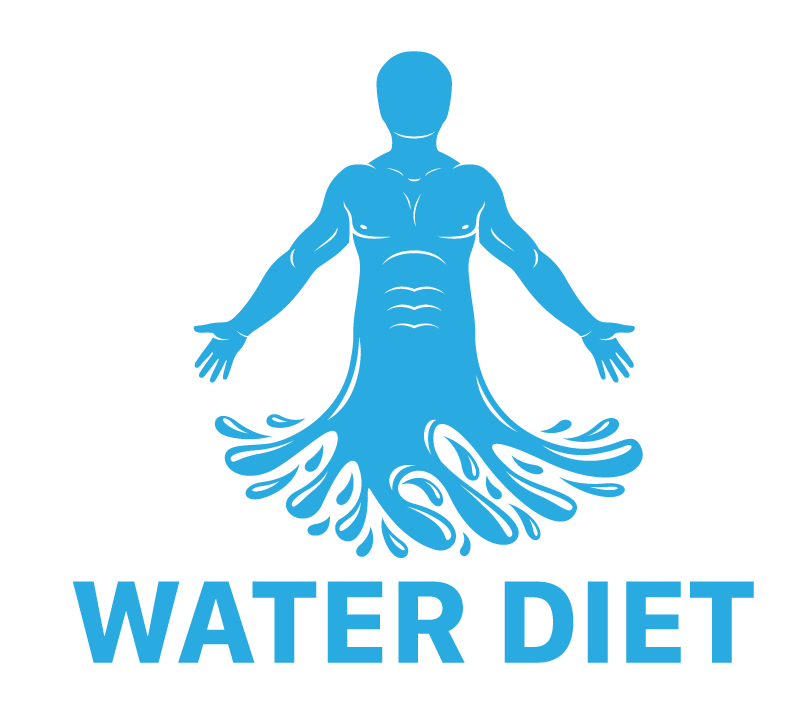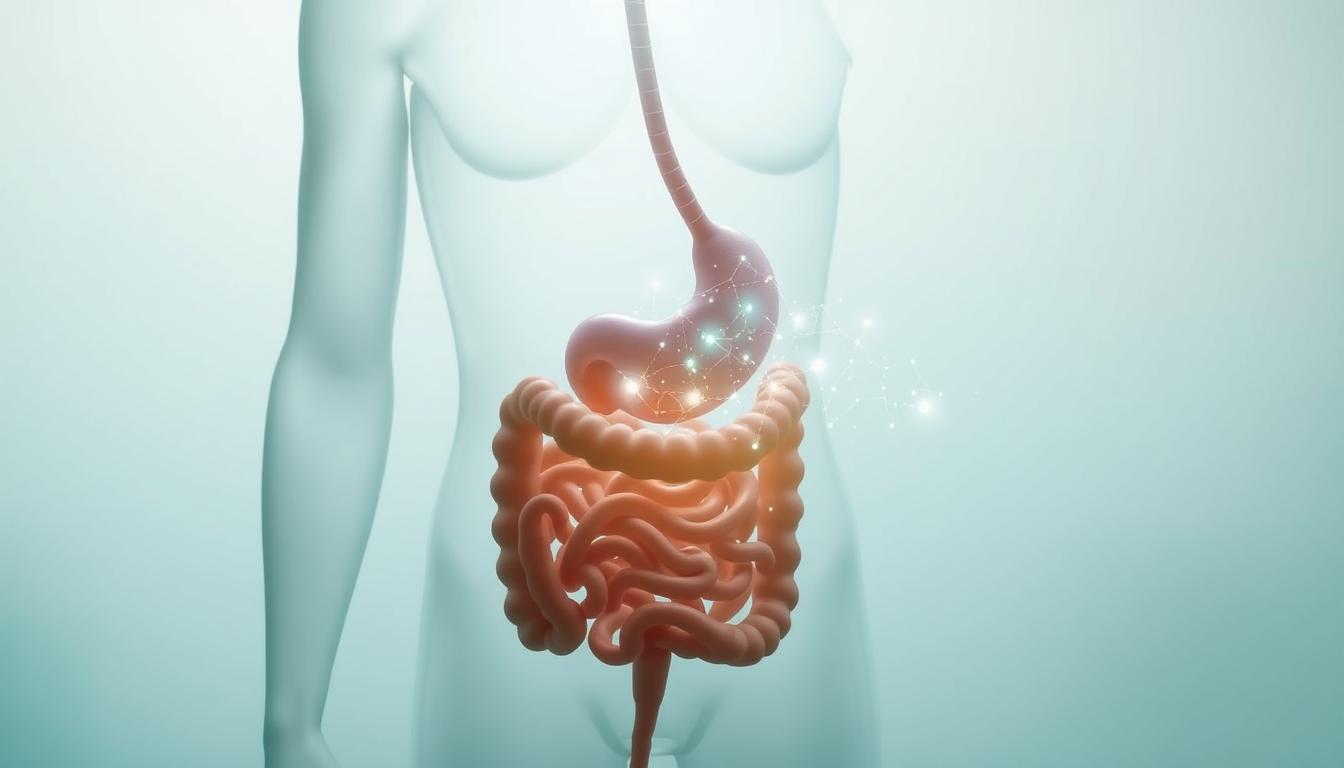Embarking on a journey to overcome obesity can be daunting, but with the right guidance, tools like water fasting may provide a path towards achieving healthier weights. Water fasting, the practice of consuming only water for a specific period, has long been seen as a potential beacon of hope for those seeking a safe weight loss solution. The simplicity of this practice belies its ancient roots, appealing to the modern seeker of health benefits of fasting. Yet, as with any form of dietary intervention, it’s essential to approach water fasting with mindfulness of the scientific caveats and under professional guidance for those considering it as an obesity management tip.
Although water fasting for obesity has been suggested as a promising route to not only shed pounds quickly but also tackle longstanding weight issues, comprehensive research in human trials is sparse. This age-old practice does carry potential risks, and understanding these is paramount for your health and safety. When done thoughtfully and occasionally, water fasting might illuminate the way to a healthier you, becoming part of your holistic toolkit for managing obesity.
Key Takeaways
- Water fasting could potentially act as a safe weight loss solution when supervised medically.
- This fasting method is part of longstanding traditions and now integrated into modern obesity management tips.
- Scientific evidence remains limited, and the health benefits of fasting require further exploration in human studies.
- Water fasting for obesity should be approached cautiously, considering individual health factors and potential risks.
- Water fasting may stimulate autophagy and reduce risk factors linked to chronic diseases when practiced correctly.
Understanding Water Fasting and Its Popularity
Fasting stands as one of the time-honored best fasting methods, with a history rich in cultural, spiritual, and health-related significance. As society progresses, the resurgence of interest in fasting, particularly water fasting, reflects a growing trend in health and wellness communities. This section navigates the historical essence, the contemporary practice of water fasting, and the motivations driving its rising popularity, especially for weight loss aspirations.
Historical Significance of Fasting
The effects of water fasting are woven into the fabric of human history. Traditionally, fasting was practiced for a myriad of reasons, including spiritual purification, self-discipline, and even as a form of protest. While the intentions behind these fasts varied, the common thread was the deliberate abstention from food to achieve a desirable state of being—whether that be spiritual enlightenment or a testament to personal will.
Modern Adaptation: Water Fasting Defined
In the modern viewport, water fasting transmutes these ancient practices into a health-centric phenomenon. Defined by an exclusive consumption of water and total abstention from food, this practice holds a mirror to society’s pursuit of innovative ways to manage health and wellbeing. Water fasting, backed by both ancestral heritage and modern testimonies, promises a portal to detox and potentially life-prolonging benefits, though grounded in cautious medical advice.
Why People Choose Water Fasting for Weight Loss
Among the myriad of weight management strategies, many individuals find the simplicity of water fasting allure. At its core, incorporating fasting into lifestyle choices offers more than just a quick fix; it symbolizes a shift towards minimalistic health interventions. The appeal of potentially swift weight reduction and improved metabolic profiles has placed water fasting in the spotlight of the wellness sphere. However, even as its popularity grows, it’s pivotal to remember the importance of contextualizing water fasting within the bigger picture of a balanced, health-focused lifestyle.
While water fasting has its champions, it is the blending of a time-respected tradition with emerging health scenarios that positions water fasting as a method worth examining. The possibility of lowered disease risks and the promotion of autophagy stands as pillars of its health claims. With meticulous attention to the methodology and an informed, health-conscious approach, water fasting may find its place among contemporary wellness practices.
An Overview of the Health Benefits of Fasting
The practice of fasting, while ancient in origin, continues to gain traction within the scientific community for its potential health-promoting effects. Notably, its application in the context of obesity management and disease prevention has sparked significant interest. This section delves into the current understanding of the health benefits associated with fasting, especially water fasting, and its implications for obese individuals seeking weight loss benefits.
Impact on Chronic Diseases
Current research suggests fasting may play a role in mitigating risk factors associated with chronic diseases. Studies have observed reductions in systolic blood pressure, cholesterol levels, and markers of systemic inflammation, which are prominent contributors to conditions such as heart disease and type 2 diabetes. Fasting, particularly water fasting, points towards an encouraging trend in health markers that could signify improved cardiovascular health. Yet, the translation of these findings from the tightly controlled conditions of studies to the variable, uncontrolled environment of real-life applications highlights the necessity for further exploration.
Autophagy: The Body’s Natural Recycling Process
Fasting has been linked with autophagy, the body’s inherent method for cleansing cells of accumulated debris, which could thwart the progression of several diseases and potentially prolong lifespan. This process, often stimulated in a state of nutrient deprivation, is crucial for cellular repair and homeostasis. While animal studies offer promising data, the precise effects and optimal conditions for promoting autophagy through fasting in humans remain an area ripe for investigation.
Water Fasting in Medical Research Studies
The field of medical research has begun to document the effects of water fasting, with initial human studies unveiling improvements in various biochemical markers following fasting periods. These studies provide a foundation for understanding how water fasting can improve insulin and leptin sensitivity, potentially enhancing metabolism regulation and satiety signals. Yet, the reliance on short-term study designs and animal models prompts caution; rigorous, long-term human clinical trials are essential to establish definitive guidance for fasting as a therapeutic intervention.
Given the intersection of fasting with complex metabolic pathways, the landscape of fasting research is one of both intrigue and intricate detail. It is a domain where each new discovery propels us towards a greater understanding of human health and the optimization of dietary practices for disease prevention and weight management.
A Guide to Beginning Your Water Fasting Journey for Obesity
For many seeking a significant shift in their journey toward weight loss, fasting for weight loss offers an alternative route. Water fasting, in particular, has emerged as a focused method within obesity management tips, emphasizing temporary abstinence from food to recalibrate the body’s relationship with nutrition. Prior to embarking on a water fast, it is crucial to assess one’s individual health profile, acknowledging that such practices are not universally appropriate and may harbor risks for individuals with certain health conditions, such as gout, diabetes, or eating disorders.
Commencing a water fast involves a period of preparation. This might include gradually reducing meal sizes or practicing intermittent fasting to prepare the body for reduced food intake. Adequate planning and intentionality can set the stage for a more manageable fasting experience.
| Preparation Phase | Water Fasting Phase | Post-Fasting Phase |
|---|---|---|
| Reduce meal portions or begin partial fasts to adjust the body’s expectations for food. | Limited to 2-3 liters of water per day, with no food consumption. | Gradual reintroduction of small, nutrient-dense meals to avoid digestive strain. |
| Ensure you’re well-informed about the potential impacts and your personal suitability for fasting. | Monitor hydration levels and be mindful of any signs of duress that might necessitate ending the fast. | Monitor body’s reaction to refeeding and begin to normalize meal patterns over several days. |
| Consult with a healthcare professional to assess risks and receive personalized advice. | Abstain from strenuous activities; relax and allow the body to enter a state of resting metabolism. | Seek medical consultation to ensure safe refeeding and manage any post-fasting complications. |
During the fasting phase, participants are advised to consume only water—generally advising an intake of two to three liters daily. It is recommended not to exceed a 24-72 hour period for water fasting without medical supervision, as the risks associated with prolonged fasting without professional guidance can be significant.
The phase after the fast is of equal importance. A gentle transition back to eating is crucial, beginning with nutrient-rich, easy-to-digest foods. This helps mitigate the potential for refeeding syndrome, a serious condition that can occur when reintroducing food to the body after a period of fasting.
With mindfulness towards preparation, execution, and post-fast care, water fasting can be maneuvered safely, contributing positively to the individual’s overarching goals for managing obesity. However, it should be underscored that despite the potential benefits, water fasting is not a magic bullet but one of many tools to be considered within a comprehensive approach to weight and health management.
‘Water Fasting for Obesity’ – Gauging Its Efficacy
The concept of water fasting as a viable approach to address obesity hinges on the principle of caloric restriction, which can lead to rapid weight loss. Among the fasting benefits for obese individuals, the most direct is the caloric deficit that may catalyze weight reduction. However, the initial weight loss often includes water weight, glycogen stores, and at times muscle tissue—not solely fat. This is a critical distinction because the primary goal for those with obesity is to decrease fat deposits while preserving lean muscle mass.
Effects of water fasting have shown promising results in terms of significant weight loss and improvement in metabolic health markers under medical supervision. Despite these initial positive outcomes, questions remain about the longevity of the weight loss and the body’s response post-fasting. Specifically, will the weight remain off, and how will the body adjust once regular eating resumes?
Evaluating the efficacy of water fasting requires a nuanced understanding. The desired result is not only shedding pounds but ensuring those pounds stay off. Clinically supervised fasting programs can result in substantial reductions in body weight and improvements in risk factors for chronic diseases.
| Weight Loss Aspect | During Water Fasting | Post Water Fasting |
|---|---|---|
| Type of Weight Lost | Water, carbohydrates, muscle | Primarily fat (desired) |
| Preservation of Muscle Mass | Variable, may decrease | Important for metabolic health |
| Longevity of Weight Loss | Undetermined | Needs further research |
| Metabolic Health Markers | Initial improvement | Continued monitoring necessary |
Given the risks and considerations associated with water fasting, personal health profiles and the presence of comorbidities must be taken into account. Highly individualized responses to fasting also underscore the necessity for personalized programs and careful post-fasting strategies to maximize health outcomes. Furthermore, comprehensive studies looking at the long-term weight loss benefits of water fasting, particularly for obese individuals, are essential to yield concrete guidance on its broader applications in obesity treatment plans.
In summary, water fasting may offer a way to kickstart weight loss and improve metabolic health markers for some individuals, but it should not be seen as a standalone solution. It serves as a potential tool in the greater arsenal of weight management strategies that requires careful consideration and professional oversight.
Potential Risks Associated with Water Fasting
The pursuit of health improvements through water fasting cannot be taken lightly, considering the health risks of fasting. While the benefits of this practice are often highlighted, it’s crucial to balance the conversation by addressing the possible dangers of water fasting. A thorough understanding of these risks can guide individuals to make informed decisions about their health regimen.
In exploring the risks involved in water fasting, losing muscle mass stands out as a significant concern. When devoid of food, the body may turn to muscle protein for energy, which can be detrimental for maintaining a healthy metabolism. Additionally, the lack of food intake may lead to various nutrient deficiencies, impacting overall health and potentially reducing the efficacy of the immune system.
Dehydration, counterintuitively, is another major risk associated with water fasting. Since foods contribute to a substantial portion of our daily water intake, solely relying on drinking water can still result in dehydration. Proper hydration is crucial, as dehydration can have serious consequences, including headaches, kidney stones, and even renal failure.
Another serious complication is orthostatic hypotension, which can cause lightheadedness or fainting when standing up too quickly due to decreased blood pressure. This condition is particularly dangerous as it increases the risk of falls and related injuries. Furthermore, water fasting can raise uric acid levels in the body, exacerbating conditions such as gout and putting additional strain on the kidneys.
| Potential Risk | Implications | Preventative Measures |
|---|---|---|
| Muscle Mass Loss | Lowered metabolism and reduced physical strength. | Consider shorter fasting periods and monitor body composition. |
| Nutrient Deficiencies | Compromised health and decreased immune function. | Ensure nutrient-dense food intake during non-fasting periods. |
| Dehydration | Headaches, renal complications, and reduced cognitive function. | Increase water intake and recognize early signs of dehydration. |
| Orthostatic Hypotension | Dizziness and risk of injury from fainting. | Gradually change postures and stay hydrated. |
| Exacerbation of Gout | Increased uric acid production leading to gout attacks. | Consult healthcare provider before starting a water fast. |
One must address these considerations comprehensively, keeping in mind that medical supervision is advised for anyone considering water fasting, especially individuals with existing health conditions. Staying informed about the health risks of fasting can empower us to make proactive choices that align with our body’s unique needs and health goals. Always practice fasting with due diligence and respect for the body’s nutritional requirements.
Navigating the Water Fasting Process: Preparation and Practice
Embarking on a water fast requires a multifaceted approach that begins long before the first day without food. Proper preparation is crucial not only for your comfort but also to minimize potential health risks associated with fasting. Whether you’re thinking about incorporating fasting into your lifestyle or seeking obesity management tips, understanding the stages of fasting will help ensure you reap the intended health benefits of fasting. Let’s delve into the essential phases of navigating the water fasting process, from preparation to post-fast nutrition.
Getting Your Body Ready for Fasting
Before diving into the water-only regimen, it’s important to prepare your body to adapt to the upcoming change. This preparation period is focused on easing your system into a new rhythm of eating and drinking. By carefully tapering off your food consumption, you can limit the shock to your body and foster a smoother transition into the fasting state.
**Preparation Steps**:
- Eat smaller meals leading up to the fast to reduce shock to the metabolic system.
- Stay well-hydrated in the days before fasting to ensure you start the process in a state of optimal hydration.
- Discuss your fasting plan with a healthcare provider to outline any personal health considerations.
Key Considerations During the Fast
During the fasting period, paying close attention to how you feel and staying hydrated is of paramount importance. Obesity management tips often stress the importance of listening to your body, and this is especially true during fasting. Headaches, dizziness, or lightheadedness are not uncommon, and knowing how to manage such symptoms can help prevent any serious issues.
**Fasting Guidelines**:
- Aim for a steady intake of water throughout the day, typically around 2-3 liters depending on individual needs and environmental factors.
- Avoid vigorous activities to reduce the risk of stress on the body during the fast.
- If any concerning symptoms arise, such as pronounced weakness or fainting spells, it’s essential to end the fast or seek medical attention.
Mindful Transition Back to Regular Eating
Successfully completing your fasting period is only half the battle; reintroducing food properly is a key step toward maintaining the benefits you’ve worked hard to achieve. The post-fast recovery should be approached with as much care as the preparatory and fasting stages themselves. It starts with gentle, easily-digestible foods and gradually builds back to your regular diet, taking cues from your body’s responses.

- Begin with smoothies or small portions of soft, nutrient-rich foods that provide essential vitamins and ease your digestive system back into normal function.
- Gradually reintroduce solid foods over the span of several days, increasing complexity and portion size as tolerated.
- Maintain a log of how your body responds to the reintroduction of different food types to better understand your digestive sensitivities and preferences.
By understanding the intricacies of the water fasting process and following these guidelines, you can better integrate this practice into your lifestyle and leverage its benefits for obesity management and overall health. Achieving success with water fasting is about more than simply abstaining from food; it’s about fostering a careful, informed relationship with your body that prioritizes safety and well-being throughout the experience.
Incorporating Fasting into Lifestyle for Long-Term Obesity Management
For many tackling the challenges of obesity, the best fasting methods might offer a beacon of hope. Interestingly, one such method is incorporating fasting into lifestyle habits, which can serve as a sustainable approach to fasting for weight loss and better health. Intermittent fasting, in particular, stands out for its adaptability and potential to positively influence long-term weight management and metabolic health.
What makes intermittent fasting attractive is its flexibility. It’s a customizable fasting practice that allows individuals to choose fasting and eating windows that align with their daily routine, making it easier to adhere to over time. By mindfully integrating short-term fasting regimens into daily life, individuals can experience the maintenance of a healthier weight without the sense of deprivation often associated with continuous dietary restrictions.
- Intermittent fasting enables a balance of caloric intake and energy expenditure over time.
- It aligns with the body’s natural rhythms, potentially enhancing circadian biology and metabolic processes.
- Regular physical activity complements the fasting periods, bolstering the benefits of each fast.
Let’s examine how incorporating different fasting methods into one’s lifestyle can contribute to a comprehensive and individualized obesity management plan:
| Fasting Method | Structure | Suitability | Benefits |
|---|---|---|---|
| Time-Restricted Eating | 8-10 hour eating window | Those with a consistent daily schedule | Aligns with circadian rhythm, may improve sleep |
| 5:2 Fasting | 5 days regular eating, 2 days limited intake | Those seeking flexibility | Limits weekly caloric intake, may reduce inflammation |
| 24-Hour Fast | Full 24 hours without intake, occasionally | Those with prior fasting experience | Deepens metabolic shift, potentially resets appetite |
| Alternate-Day Fasting | Alternating days of normal and reduced/calorie-free intake | Those looking for a weight loss boost | Can lead to significant caloric deficit over time |
Customization is key; fasting regimes are not one-size-fits-all. Adjustments based on individual health statuses, goals, and lifestyles can enhance the efficacy and ensure safety during fasting periods.
Focusing on incorporating fasting into lifestyle changes may pave the path toward more than just weight loss. By properly adapting fasting periods, individuals support their long-term health objectives, which can include better blood sugar control, improved cardiovascular health, and reduced inflammation, all while managing weight effectively.
While intermittent fasting poses a promising avenue for obesity management, it is not without its considerations. Duration and frequency matter; overzealous fasting without regard for nutritional balance can counteract any potential gains. Consequently, integrating this practice requires thoughtfulness and a commitment to holistic, actionable health practices.
- Begin with shorter fasting periods to assess tolerance and adapt gradually.
- Stay hydrated throughout fasting and non-fasting periods, ensuring adequate water intake.
- When breaking a fast, opt for nutrient-dense foods to replenish and nourish the body.
Ultimately, adding fasting practices into regular lifestyle choices should be done under professional guidance to tailor the experience to individual needs and health profiles. As part of a larger wellness narrative, fasting has its place, augmenting dietary and exercise habits to assist those on their weight management journey. When planned and approached deliberately, intermittent fasting can lead to enduring, healthy lifestyle modifications, contributing to a successful long-term strategy for obesity management.
The Role of Medical Supervision in Water Fasting
The journey of water fasting, particularly for individuals wrestling with obesity, should never be walked alone. Seeking medical supervision in water fasting is akin to having a compass on an uncertain path—it provides direction and ensures that your steps towards better health are both safe and effective. Medical professionals not only offer crucial insights into fasting protocols tailored to your body’s needs, but also stand as vigilant sentinels throughout the process, guarding against potential health setbacks.
Identifying When You Need Professional Guidance
Recognizing the right time for professional input starts with an honest appraisal of personal health. Each individual considering water fasting carries a unique set of health circumstances, and a healthcare provider can pinpoint how fasting could intersect with these conditions. Moreover, knowing the warning signs that mandate a swift end to the fast is critical for your wellbeing. When navigating these waters, having a healthcare provider’s wisdom to guide you on when to commence—or cease—water fasting is indispensable.
Fasting Protocols in Clinical Settings
Embarking on a water fasting regimen within a clinical setting provides a structured approach that aligns with medical best practices. Healthcare professionals develop fasting protocols with an emphasis on your personal health indicators and goals, carefully considering factors such as duration, frequency, and the type of water intake. This kind of regimented plan is essential to maximize the health benefits while minimizing risks.
Post-Fast Medical Monitoring
Monitoring and support should not conclude with the fast; the post-fast phase is equally important. Vigilant post-fast monitoring by healthcare providers ensures that reintroduction to normal eating habits proceeds safely, steering clear of complications such as refeeding syndrome. Check-ins and assessments of hydration, electrolyte balance, and general health markers afford a smooth and stable transition back to a normal diet, safeguarding your efforts and health.




